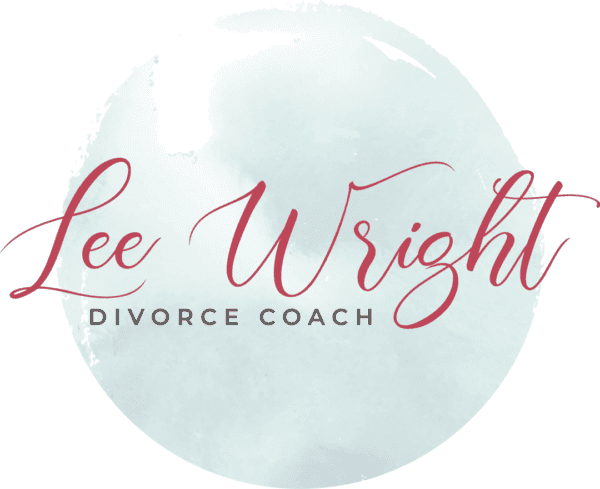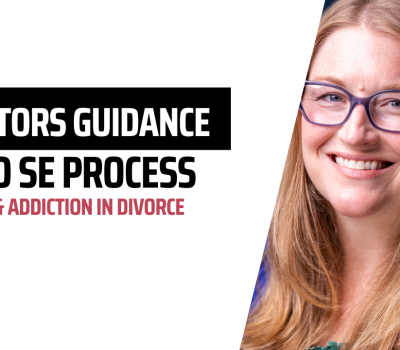Welcome to Seasoned Ebb and Flow. Thank you for coming and watching today. I’m Lee Wright, I’m a divorce coach and today I’m going to be interviewing Dylan Smeder and we are going to be talking about attachment styles. I have worked with Dylan as he was my attachment styles coach. When I was learning about attachment styles, it was kind of like mind blowing for me when I learned about it. It was something I didn’t know about. And once I learned a lot more about it, it made so much sense. It helped me understand some of my challenges in relationships. It helped me understand my exhusband style a little bit more and why we were in this constant kind of interchange of push pull that eventually really didn’t work. So I’m going to introduce Dylan now and have him tell us a little bit about how he was introduced to attachment styles and a little bit about his background. Over to you. So before attachment styles, I was kind of interested in therapy, but never really went that route and eventually went to couples therapy with a partner and they didn’t talk so much about attachment style, but I learned a lot about the mistakes I was making in relationships. And like, in about a month, like, honestly, my mind was completely blown. I learned so much about my own defensiveness.
I learned so much about how, like, I wasn’t hearing her, how I wasn’t able to really empathize with her and it really changed my perspective. After that, I was really interested in therapy and I was thinking about going to school and then I started seeing all these coaches pop up and one of the coaches I saw pop up was Philip Lewis. He’s the person who actually created the attachment community in the place where Admining and I started reading a lot of his stuff. I started just reading about attachment styles and from that reading and a bunch of other reading that I did in combination with what I learned about myself in couples therapy, I just started to put the pieces together and it felt very intuitive and piece by piece, eventually, this is what I have to do. I recognized I knew how to do this. I was coaching my friends at this point. I was coaching random strangers at this point as basically coaching everyone around me that was interested in coaching. And I think this is what I have to do for a living. I went for it. Yeah. That’s awesome. The sessions I had with you were really eye opening for me. It really was like the attachment styles community on Facebook was helpful to just reading other people’s questions and answers. Once I knew kind of the basics about attachment started to enlighten me to the nuances. But it’s one thing to start to understand the nuances and it’s another to apply them to yourself and see your own challenges. And then even if you start to intellectually understand them, integrating them is where I feel like the challenge. And that’s where I found having you as a coach to talk through some of those things was so helpful. So some people who are watching this probably know very little about attachment styles. So maybe you could give just a brief overview of like when I think visually, I think kind of in pictures a lot of times and for me, I think of attachment styles from a bell curve and I always think the secure is right in the middle, secure people who have healthy attachment styles. And then on the one side I imagine is anxious and the other side is avoidant. And then I always imagine the anxious and avoidance push pull dynamic. But if you maybe can explain a little bit about the basic concepts behind attachment styles yeah, I would say that’s a slightly simplified point of view. They’re secure and it’s right at the center, and then there’s anxious, there’s avoidance and then there’s anxious avoidance people, both the anxious and avoidance side within them. But let’s go what I’m saying so you’re right, let’s go back kind of the simplified model. There’s the anxious on one side and there’s the avoidance on the other side. And both anxiousness and anxious attachment and avoidant attachment are both coping mechanisms. They’re coping mechanisms for not feeling secure. And people who are on the ancient side are generally are looking for security from their partner. They’re looking for support, they’re looking for validation. And people on the avoidance side are looking to kind of for space away from their partner to self regulate. Yeah, and the challenge with kind of both the anxious side and the avoidance side is both sides are kind of avoiding oneself. The anxious attacher, avoids oneself to go get validation from one’s partner. Getting validation from one’s partner, that’s helping. I think that’s important. That’s something its own values. I think it’s really important that they find a relationship where they can get that validation from their partner right, where they uplift you.
The challenge is that if you’re on the anxious side, the anxious coping mechanisms make it so you have this extra strong desire to go get that validation from the partner, but then also get in the way of actually finding a partner who will give you that validation or communicate in a way that they can understand you so that they can give you the validation that you’re looking for. And I think what I finally understood is that when you’re on the anxious side, you’re looking for that external validation because you’re not very good at giving it to yourself. And so until you find the ability to provide enough supply to lift yourself up and not constantly look for it from outside sources. You’re going to be anxiously clinging to that constant connection and constant validation because you’re insecure in yourself. But once you are able to provide some of the self love and kind of positive reinforcement and self talk to yourself, you’re not constantly looking for an outside external source to give that to you. Yeah, I’d say that really describes some manifestations of anxious attachment really well, whereas in other cases I think the actual desires for validation are perfectly normal and actually really healthy. But the problem is that people end up getting attached to partners that aren’t willing or able to give that type of validation. So it’s really very dependent upon the individual for what that experience is like on the anxious side, on the avoidance side. I think one if there’s any downfall of kind of this concept of attachment and attachment theory is that it’s possible for people to kind of get this concept that all people on the voidant side or all people on the ancient side are the same but really they’re not. People on the avoidance side come in a lot of different varieties and they kind of struggle with a lot of the same myriad problems that people on the anxious side struggle with. Like for them sometimes they end up with a partner who as you said, doesn’t know how to validate themselves and therefore is just constantly asking for validation and only a burden side that’s probably going to be really activating really challenging and not going to be possible to have a really good relationship with this person. So they could end up being stuck. Same way anxious person could be stuck or someone on the avoided side could just the person on the anxious side totally could be asking for something reasonable and the person on the avoidance side could just avoid the heck out of that, right? Run away. And maybe that’s not the best way to put it, but like essentially avoid being part of the relationship.
My understanding from my perspective, the way I think about avoidance is that when there’s too much emotion or they start to feel very connected or there’s any question of the connection emotionally they start to feel unsafe and that unsafety for them creates such dysregulation in their nervous system. They get so thrown that their coping mechanism is to create distance and space so that they can come back to some semblance of regulation in their nervous system so where they can feel calm again and then they come back to the relationship. But that distance and emotional disconnection that they create to internally find safety is very hard for the anxious and so they start getting more and more insecure and clingy which then pulls the avoidance further away until they both kind of come back to a center. But it’s this constant like avoidance start to feel uncomfortable for whatever reason. There’s various based on their backgrounds and challenges which their reaction sometimes creates a reaction. It’s like this just constant ebb and flow of like pull away, reach for pull back and come back to some semblance of healthy connection. But then that there’s just constant challenges where there’s disconnection. And at least when I think about my marriage, over time, that disconnection starts to last for longer, and the space between the two of us would just grow further, and I would start to pull him back in less, and he would pull further away until there was just so much disconnection that it ended up being where we were. Like living parallel lives at a certain point towards the end. And then because of that, when we finally decided it was over, the disconnection had been so great for enough time that it wasn’t even that challenging for us emotionally when we decided it was over, because it had actually been over for quite a while. And we had stayed in this space of living together because we had kids in a house and just running a household and becoming partners. But that dance of push pull had lasted for so long and each time we came back, we came back left and then we got to a point where we were just so far from each other. Yeah, I really like the metaphor of the push pull. I think the specifics can really vary based on the two people and kind of how the anxiety is actually manifesting but it ends up being in this whole push pull dynamic that can be really painful for both sides. And in some of those cases, two people end up in what they call like situations. A relationship that’s really not going anywhere for long periods of time. And other people can end up in situations where they don’t even really get there because relationship keeps falling apart before you even get started. Yeah, I think in a minute we can talk a little bit about what it means to work towards secure. But I think that I forgot what I was just going to say when I thought about what so let me ask you that what does it mean to work towards becoming more secure? What does that mean to work towards becoming more secure? In my mind it means choosing to look at one’s life in terms of becoming more emotionally aware and working through one’s own attachment issue.
a couple of challenges. First is a relationship I’m in right now, where am I am I in a relationship? Am I not in a relationship? If I’m in a relationship, is this one just like so far off the edge that there’s like no one even like being in it? And even if the answer to that is like yes, is it really going to be super easy to get out? Probably not. So generally wherever someone is right now, like I would say working towards security is generally just being where you are and figuring out what coping mechanisms are coming up, what are your coping mechanisms, finding out about yourself and from there learning how to have a better relationship with those coping mechanisms so that they have less control. Yeah, definitely. For me on this journey of learning about myself, it has been understanding one, finding that self validation and security in myself and who I am, which has, I think, especially on the anxious side, there’s that fear of abandonment, which I didn’t even realize that I had until I started working through some of this. And it also helped me understand and feel compassion for my ex husband of his challenges, being more on the avoidance side, like struggling with the things that came up for him from his childhood, that created his reactions and recognizing that we both came to them from a place of innocence, of just what happened to us in our past lives that created these behaviors and insecurities and that neither of us were trying to harm the other person.
We were just trying to protect ourselves. But in that process, we were hurting the other person. And so much of these reactions that you have in these relationships come from a place or you’re subconscious. We’re so unaware until we start doing the work of what’s going on in our subconscious and even our reactions. They happen so quickly in that whole reptilian part of our brain that we don’t even realize how our reactions are so challenging for the other person. And then their reptilian brain reactions from their past jump in and all of a sudden you’ve created this dynamic that then repeats itself. And until you start to understand your past wounds and your reactions that aren’t supportive of the relationship from your own places of insecurity, you can then have awareness, which then creates the ability to change your behaviors or reactions so that you can change that dynamic. But until you’ve done the work to create awareness of yourself and your behaviors and patterns, the dynamic won’t change. I know something that I think I did a lot, like there was codependence as well for me and so I would focus a lot on oh, if they would change this or their issues are this and that’s causing some of our challenges. And as much as I was reading about psychology and during the marriage I learned about five love languages and all these things and when I would bring them up he would pull away and I know that was understand.
Now, it wasn’t like a lack of interest or desire or by that point it might have been, but it was created fear and insecurity for him of like, okay, you’re telling me that I have failed in some way, that now you have to look at these different things. And I feel like if everybody had the ability to take the time to look at themselves and do more work on themselves, then just their change in reactions will change the dynamic in the relationship. Yeah, I think one thing that you hit on that’s maybe something that’s identifiable is fear of abandonment. There’s a lot of people who really deal with fear of abandonment. Maybe not everyone recognizes that within themselves, but it’s something that people can work towards recognizing the first step is kind of in my mind is just recognizing when that comes up and like labeling it. So if you are having an argument, you’re having something or your partner pulls away and you start feeling bad, start looking to see when you notice that you’re having a fear of abandonment. And if you notice it, then label that and say to yourself like oh, I’m having fear of abandonment right now. That create some awareness around what’s actually happening and kind of bring the focus back to you instead of your partner. And the more you can kind of recognize those patterns, the more power you actually have in the moment to think about what you want to do. Yeah, maybe you do want some more validation from your partner but if you’re coming from a place of your own fear of event and then you’re probably not going to be asking for that in a very nice way. Absolutely. Yeah. And then also from the anxious side, the people pleasing where you aren’t even asking for what you need because all you’re doing is constantly hyper vigilantly watching their needs and reactions, trying to keep them happy and kind of disconnecting from your own needs and desires, which then gets you to a place of feeling needy or empty or feeling like they’re not meeting your needs. But you haven’t communicated what your needs are or your desires are because you’re constantly trying to keep them happy for that fear of them pulling away or leaving. And until you start to realize that you’re doing that and find the ability to first connect with your feelings and emotions and needs so that you can communicate them, that’s a whole other step in the process is really getting to know yourself and figuring out what is important to you. And the book that you recommended for me on one of our calls was Whole Again and that was really mind blowing for me. Like there was so much that I took away from that book. Yeah, it’s one of my favorite books.
I’ve been essentially trying to get everyone to read it. I think it’s really good at getting people to think about their body, think about where they’re actually storing emotions and kind of be more conscious of the various coping mechanisms that are within themselves. And as far as I can tell, understanding your coping mechanisms is the most powerful tool that you can have in terms of becoming more secure. Because if you’re aware of them, you can take that awareness and slowly gain more power when they actually come up and from there, change your patterns and become more secure. Yeah, exactly. For me, reading about his story with reconnecting to his body made me understand how much I was disconnected from my body and from my emotions. And then as I started learning a little bit more about polyvagal theory, I learned how, like, the vagus nerve, like, 80% of the messages come from the body up to the brain about your emotions. Like whether your stomach tightens or you feel a tightness in your chest, that’s communication messages for you to become aware of, like, oh, I feel stressed right now. In this moment, if you’re connected to your body, you notice that you’re tightening something or feeling a little pain, and then you can say, like, what just happened? That happened in this interaction that made me feel stressed. Sometimes you don’t even when you haven’t been practicing for a long time, that awareness for its stuff that is so far back in your subconscious that you’re not even aware that you have a fear that’s coming up or disregulation that’s happening from the interaction. But then when you start to have these awarenesses start to take place, you can notice them and then eventually, over time, catch yourself or change your behaviors or your patterns so that you aren’t creating the same dynamic every time. But it’s a challenging long term practice. It’s not something that happens overnight, that’s for sure. Yeah. And I’d say one of the steps is recognition from recognizing one’s patterns. Kind of the next step is getting better, recognizing them in the moment. And then the next step of that is essentially analysis to better understand what’s happening when it actually comes up in the moment so you can understand that moment back. Yeah. The more you understand that moment, the more power you have over that moment and the more you can validate your inner child, one that actually comes up in the moment. A lot of what is really happening is either one’s inner child is just kind of going wild and it’s just acting completely out of coping mechanisms, or we’re fighting with our inner child and shutting down. And either way, it’s not really helping our relationship with that part of ourselves. And if we want to be more secure, we need to kind of create a deeper relationship with that part of ourselves so that that part of ourselves doesn’t keep trying to have relationships with other people and basing its security on some insecure relationship. Yeah, exactly. Yeah. And the more the healthier the relationship you have with yourself and that you can provide a lot of security to yourself and not come into a relationship from a place of fear of being alone.
If you can come into the relationship from those places, I feel like you can then come in from a more secure place and then those fears aren’t constantly driving your behavior. And then another thing that has been really eye opening for me. I don’t know if you read the book or Listen to Love is Not Enough by Mark Man. Okay. It was so good for me. It’s really interesting. But he’s doing coaching with people in the book itself. And one of the big takeaways I had from there was that I was choosing partners who were very similar to each other because they were familiar, and they had a lot of similarities to the type of person that my father was. And there were so many things I was seeking from those people that were similar to, I guess, what I was seeking from my dad that I wasn’t able to get. And I just was kind of repeating the same pattern over and over. And, yeah, the awareness that I was doing that has at least helped me identify, like, maybe I need to choose people who are a little different to that. Yeah, I know. It makes a lot of sense. It sounds really yeah. It’s weird how much your subconscious drives some of your behaviors, and changing that can be challenging. I think part of that is that we do kind of value what we know, and it’s kind of like the subconscious wants to hold on to something, wants some form of connection, and holding on to what it knows is often the easiest way to kind of do that. And it needs kind of connection, it needs security, it needs something solid from you if it’s going to be willing to let go of that old pattern because it wants something to hold on to and then the familiarity with that dynamic, it’s almost especially if you’re attaching or drawn to a dynamic that maybe isn’t healthy, but there’s like an excitement in it almost. There’s a little bit of an addiction to the drama of that push pull because there’s energy in that until there’s none. And what I’m starting to see, like, when I start relationships from a much more secure, healthy place, there’s a calmness and a peacefulness to them that if you’re not used to that, it almost feels like less exciting. And then when it’s so different to what you’ve done in the past for so long, it almost seems like, this isn’t what I know or like, but essentially that, like, is really not what’s best for you. It’s just what you know and what you’re familiar with. But that doesn’t mean that that’s good for you. Yeah, it’s high adrenaline. It’s something that’s like sugar. It’s going to feel really good right now, but, like, in 20 minutes, half an hour, you’re going to be like, down, so you get everything kind of all front, and the cost is on the back end. It’s probably going to be really miserable. Whereas if you go into a secure relationship, if you’re used to that high adrenaline push pull and you’re kind of getting something out of that, it can seem kind of boring until you see that it’s kind of like slowly going up. Slowly going up. Eventually you’re a lot higher than you ever got with the push and pull, but you’re not starting from ground zero or less than ground zero, so you’re not getting that same effect. It takes a bit to kind of get used to the feeling of security, but after a while it’s great, it feels solid.
You don’t have the same like worries and anxieties coming up all the time because you can actually trust this person and you can actually trust yourself with this person that you’re with. Yeah, it’s really incredible and it’s eye opening because until I got to a place of coming into a relationship from a more secure place than I was in the past, I didn’t understand. I just couldn’t comprehend the difference. And I think that it’s just a gradual process. And then when you get to a place where you are coming into relationships from a much healthier place, you start to notice the nuances that are different and recognize how some of those unhealthy patterns that were just all you knew were just that like unhealthy patterns. But changing them within yourself can be create beautiful things that are just much more peaceful and supportive in the long run.
Yeah. Another thing that actually you mentioned in one of our sessions that was really helpful for me was I was talking, I think about someone and I kept trying to place them either in like good or bad. And you were like, have you ever thought about the fact that sometimes your thinking can be very binary? And I didn’t understand what you meant at first, but as I started to let that sink in and think about it, it really helped me. Maybe you can talk a little bit about what binary thinking can look like. Binary thinking, black and white thinking when people are anxiety makes it really easy to think in binary. It’s like everything is off, everything is on, everything is amazing and everything is awful. And it’s kind of like on the anxious side, it can be like, this person is amazing, I really want, I really want, I really want it. And on the wooden side, it can look like, I need to get away, I need to get away, I need to get away. But when looking at another person, we’re human and we’re not perfect. And there’s going to be some good things and there’s going to be some bad things. And if people are noticing that the way that they’re looking at everything is really binary, that’s probably an anxiety reaction as opposed to really looking at what’s in front of them.
The specific example you kind of want to go more into or if that is I think at the time it was trying to just like in my past, I have gone into relationships with people who are similar to my father, which have narcissistic tendencies and then also get dysregulated so easily. And there’s like this lack of safety for me, but this people pleasing side within me. And I think the person that the relationship was falling apart and I was trying to decide, like, are they good? Are they bad? Are they trying to hurt me? Are they narcissists? And I think you brought that up and things aren’t black and white. There’s not a binary, they’re good, they’re bad people. It’s the dynamic that you guys are creating and there’s going to be behaviors on each side that are good and bad. And I do think there are extremes. There are people that are really inducive and I don’t want to take away from that. There are people that I think even that’s not a binary, but kind of who cares? It’s like beyond a point, like this other person, the way that they’re acting is just so inappropriate. Beyond inappropriate, that just kind of for the rest of us, we have good qualities and bad qualities. And if one of your qualities is people pleasing, I’d say that’s probably a place where like, you could take some responsibility in terms of that relationship because the other person isn’t forcing you to people please. It’s something within you that helps you feel safe. Exactly. If you can kind of notice those little things and then maybe also look at their patterns, it’s going to paint like a more realistic picture of what’s happening between the two. So, yeah, this has been a really good kind of high level conversation about some of the basics when it comes to attachment and some of the things that I learned from talking with you. But maybe we’ll have some more conversations in the future, just about some very specific topics where if people want to learn a little bit more about what you’re doing or attachment styles in general, where can they look for things from you also? Well, first I’ll say thank you so much for having me. This has been a lot of fun, really great conversation, and coaching you was wonderful and I love talking about this. If people want to reach me, they can find me in the attachment theory at a time. Yeah, you can redo that. Okay, should I start over or should I just go from where I was? I guess where you were? If people want to find me, they can find me in the Tatchman community on Facebook or find me at my website, Dylan Smeeter.com. That’s D-Y-L-A-N SM. Okay, great. Thanks for this and let’s keep this going. We’ll talk later. Okay, let’s sounds great. I will see you at some point over Zoom. All right, have a good one. Bye.





